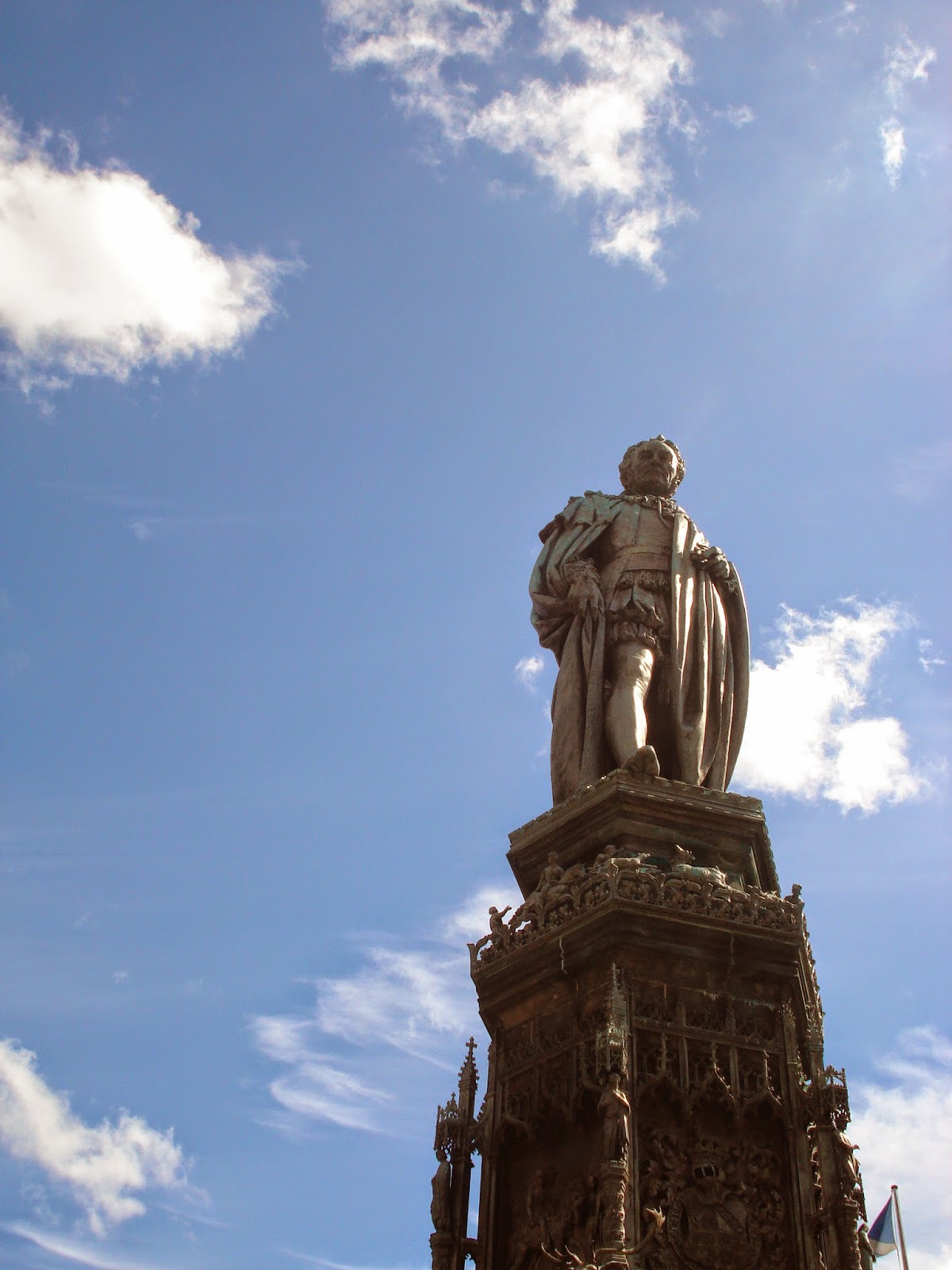Day 9
Our participation in tour activities ended on Day 8 therefore, on Day 9 those of us who were not going on to the Irish part of the tour were free to do whatever we wanted. The MacDonald Holyrood hotel did provide us with a nourishing breakfast every morning and to me, lunch wasn't that important after eating such a large breakfast. I set off by myself after making arrangements to meet up with those who stayed in Edinburgh for the extra day, to have one last dinner together in the hotel, before we all went our different ways.
I made my way to Holyrood Palace where I spent almost the entire morning. It was relaxing to be able to wander around without having to pay attention to a tour schedule and since I hadn't visited Holyrood Palace for twenty six years, I was pleasantly surprised at the changes. Previously all visitors to the Palace were told to stay with the Palace tour guide and we were not allowed to wander off by ourselves, but this time I could go at my own pace because all visitors are given the usual audio box that provides the information for each room in the Palace.
The front courtyard at The Palace of Holyroodhouse, the official residence of the British Monarch in Scotland.
The side of Holyrood Palace.
The inner courtyard of Holyrood Palace.
The ruins of old Abbey church at Holyrood Palace.
The royal vault at Holyrood Abbey.
The grounds at the side of Holyrood Palace where you can see part of the main peak (Arthur's Seat) of a group of hills which form most of Holyrood park.
The back of Holyrood Palace.
A passing tourist was kind enough to take this photo of me in the front courtyard of Holyrood Palace.
After exiting the Palace, I made my way to the new Scottish Parliament building that sits at the foot of The Royal Mile, and is open for visitors.
Side view of The Scottish Parliament building on The Royal Mile.
The sign outside The Scottish Parliament building is in both English and Gaelic.
Inside the Scottish Parliament building.
The public gallery is on the top level.
Matchstick sculpture of Robert Burns, Scotland's national poet, inside the parliament building.
Matchstick sculpture of Robert Burns, Scotland's national poet, inside the parliament building. This one was set alight to mark the 250th anniversary of the poet's birth. It has been blackened by fire.
After visiting The Parliament building, I rode the on-off Edinburgh tour bus back up the Royal Mile because I wanted to visit "The Tartan Weaving Mill" located right beside the castle. The mill is quite large and although it is a shop, it is also full of interesting exhibitions. It shows the whole process involved in tartan production from the sheep to the kilt.
Kilts through the ages.
Ancient Scottish dress.
After visiting the Weaving Mill, I strolled down The Royal Mile to St Giles Cathedral where for the first time in my life I lit a candle at the altar. I didn't light it for anyone in particular but it felt right to do it in such a majestic building.
St Giles Cathedral (The High Kirk of Edinburgh).
Bronze statue of the Duke of Buccleuch on The Royal Mile, eldest illegitimate son of king Charles II.
After St Giles Cathedral, I stumbled across another museum on The Royal Mile called "The People's Story." It was a small place but the admission was free so I went in and it was the story of the people of Edinburgh from the 18th century until today.
The Plaque outside the entrance to The People's Story Museum.
I didn't take many photos inside The People's Story museum but I found this plaque to be interesting. The Rechabites Order was founded in 1835 to promote total abstinence from alcohol. It gradually transformed into a financial institution which still exists today, and it still promotes abstinence.
Near The People's Story museum I came across The Canongate Kirk which is the Kirk of Holyroodhouse, the Kirk of the Scottish Parliament and the Kirk of Edinburgh castle. The Kirk was founded in 1688 and the wedding of the Queen's granddaughter Zara Phillips took place here in 2011.
View of Edinburgh from the old graveyard alongside The Canongate Kirk.
Outside the Kirk is a statue of Robert Fergusson an 18th century Scottish poet. He matriculated into the University at St Andrews but did not complete his studies. It is said that he was the inspiration for the poet Robert Burns who modeled some of his own works on the works of Fergusson.
That evening we all had dinner at the hotel and said our good-byes. For me it had been a very good trip and the breakup of the group was a bit sad, but that's the way it goes. I was so tired that I slept well that night in preparation for my early pick-up the next morning.

















































